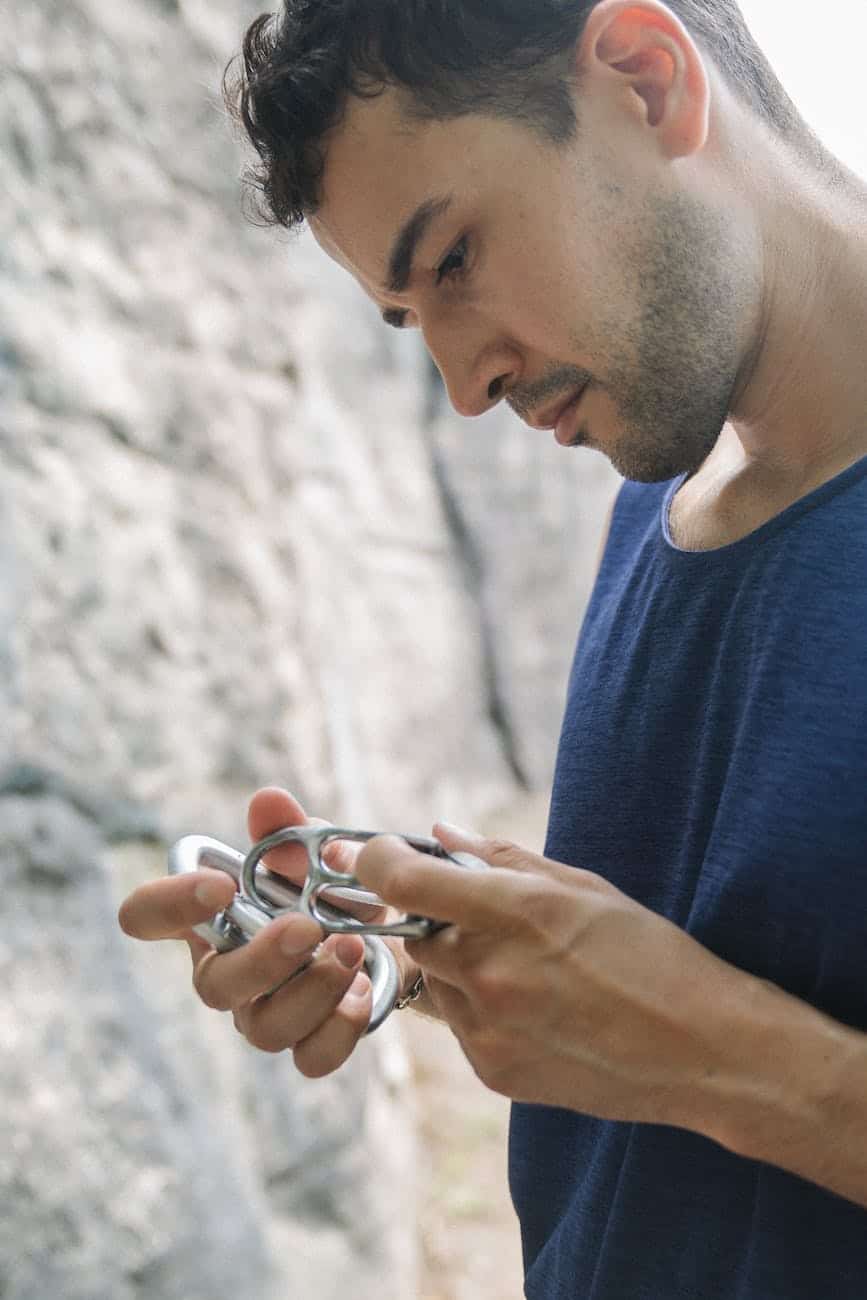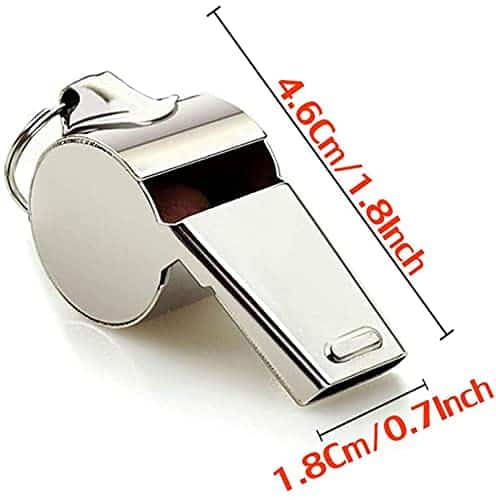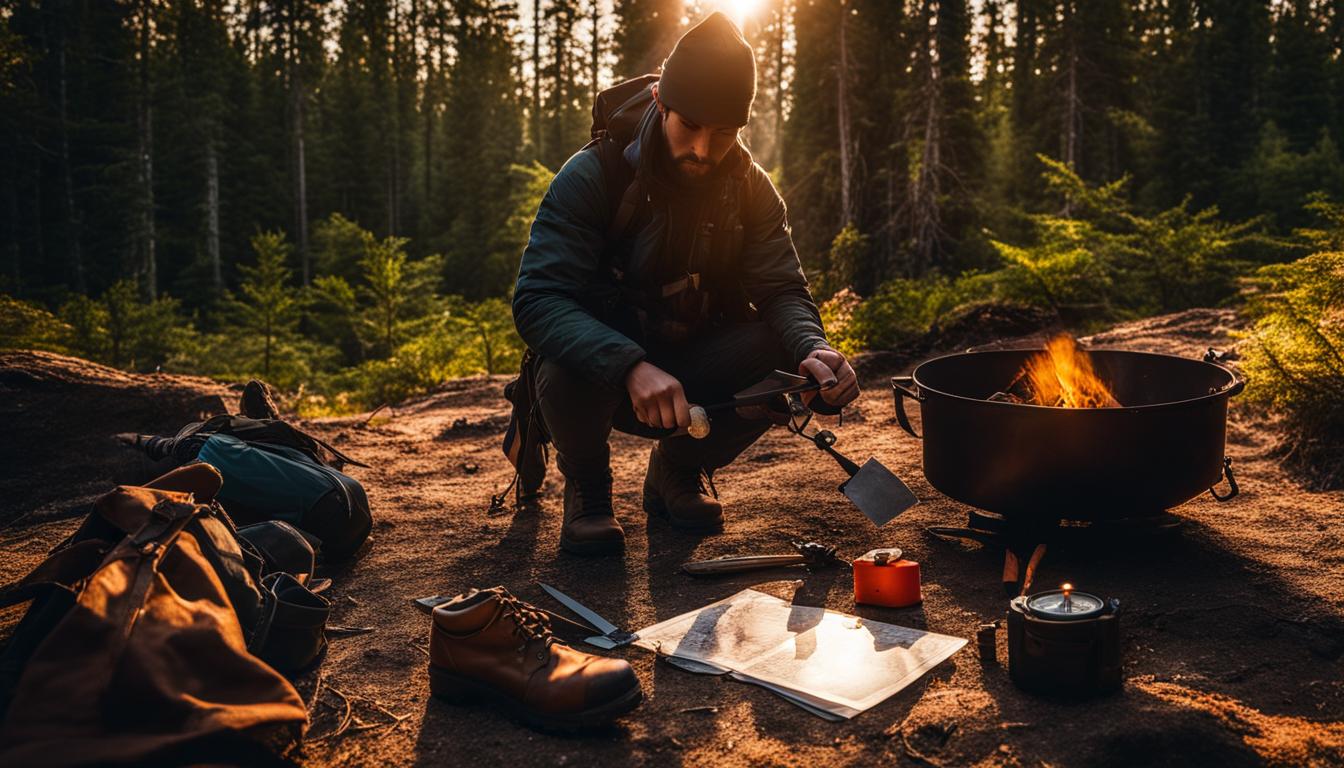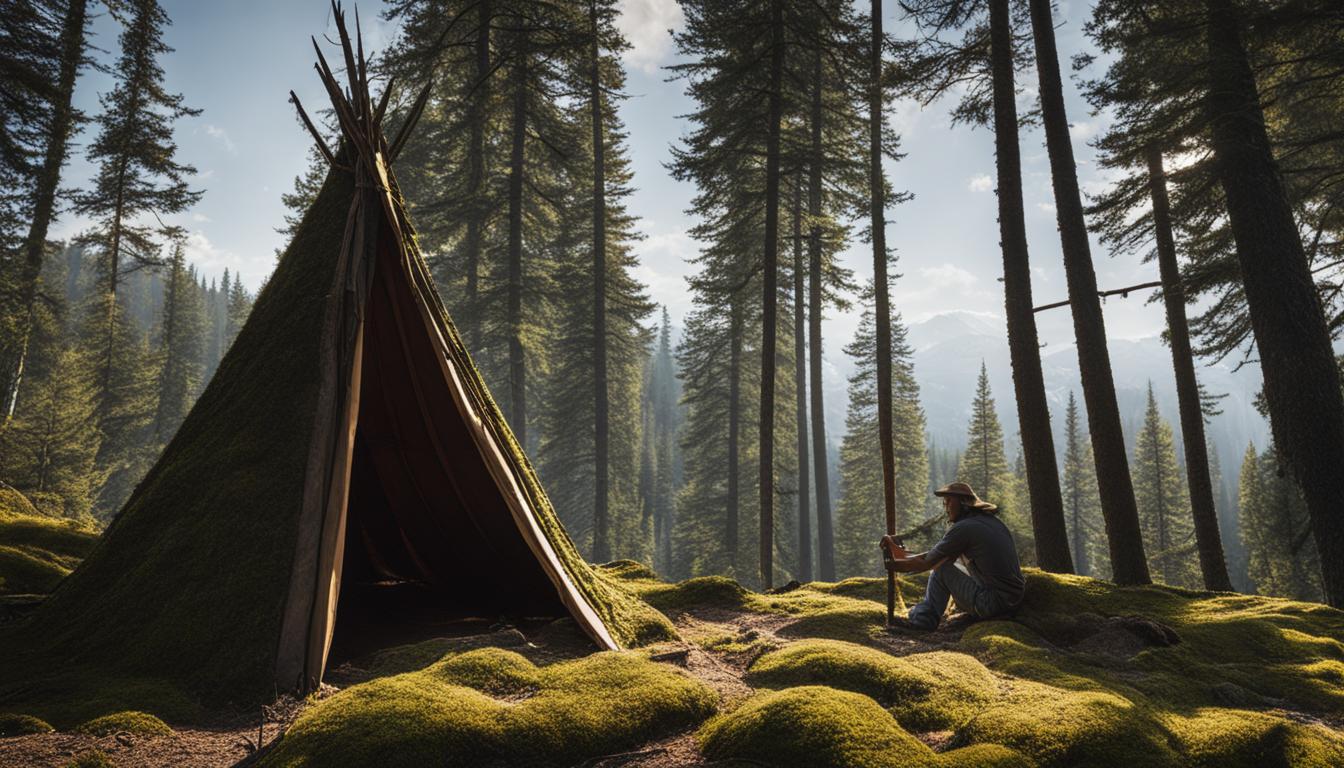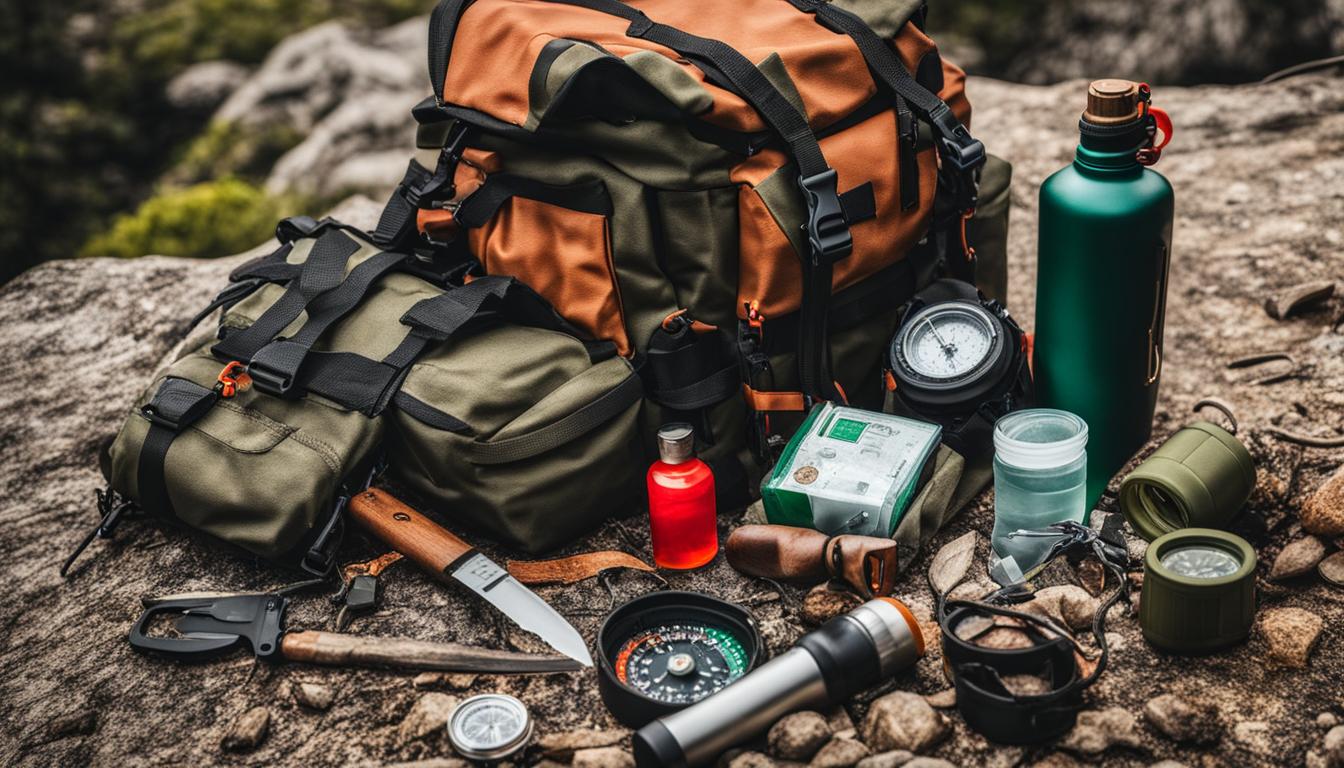As a survival specialist, I am always on the lookout for ways to ensure my safety and security in any situation. This is why carabiners have become an essential part of my gear – their versatility makes them invaluable for a variety of tasks! In this article, we will explore the many ways in which carabiners can be a lifesaver in all survival situations, from constructing shelters to securing gear or assisting in navigating difficult terrain. With the right skills, these versatile clips can provide you with the peace of mind that you are prepared for whatever may come your way.
With their strong construction and dependable versatility, it’s no wonder carabiners are such popular items among adventurers and outdoorsmen. Not only do they come in handy during emergency situations, but they also provide invaluable security when climbing or traversing dangerous areas. By understanding the basics of carabiner use, you can rest assured knowing that this indispensable tool is ready to serve your needs whenever necessary.
In short: Carabiners are amazing pieces of gear that offer unparalleled support and protection in nearly every survival scenario imaginable. Their portability makes them ideal for carrying on extended trips through rough terrain and challenging climates; plus, their simple design ensures quick setup and reliable performance even under extreme conditions. So don’t let yourself get caught off guard – make sure you know how to utilize these lifesavers effectively before heading into the unknown!
Definition Of A Carabiner
Imagine a mountain climber, hanging off the side of a cliff. His life is in danger and there’s no other way out; that is until he sees something glinting from up above – a carabiner! This small yet powerful piece of hardware has saved many lives by providing secure attachments for climbers to use when ascending or descending cliffs. But what exactly is a carabiner?
A carabiner is a metal loop with one or more spring-loaded gates used as connectors in mountaineering, climbing, caving and rescue operations. It’s an essential component in any survival situation as it can be used to quickly attach items such as ropes, harnesses, buckets, backpacks and even keys to clothes or other objects. The word “carabiner” comes from the German term Karabinerhaken which translates roughly into “spring hook”.
Carabiners are versatile tools because they come in different shapes and sizes that make them suitable for various uses. They provide dependable security during activities like rappelling down steep terrains; however, some types of carabiners should never be used for this purpose due to their design flaws. Knowing how to recognize different types of carabiners will help you stay safe while using them on your next adventure!
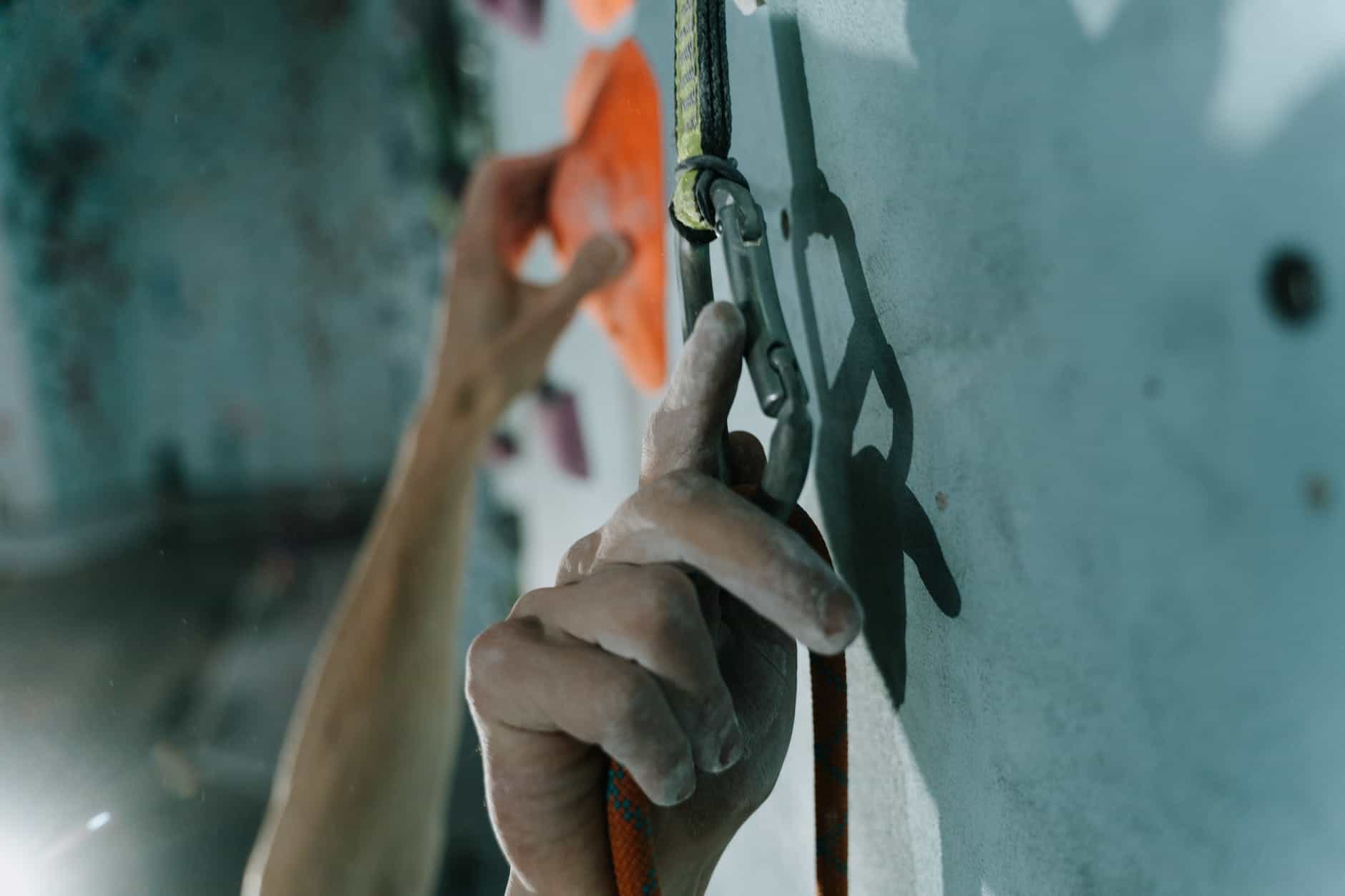
Types Of Carabiners
Carabiners are incredibly useful for a variety of survival situations, and they come in many different shapes and sizes. Locking carabiners are made with two gates that can be secured together to ensure items stay attached. Double-action carabiners have an extra locking mechanism so the gate won’t open accidentally. Steel carabiners are heavy duty and often used when a solid connection is needed. Oval-shaped carabiners provide more material to clip things onto than round or D-shaped options, but may not fit into tight spots as well. Lastly, wiregate carabiners offer a lightweight option that’s often easier to manipulate than other types.
With all these choices, you’re sure to find the best type of carabiner for any given situation! Now let’s take a look at some of the benefits of using them.
Benefits Of Using Carabiners
I’m a huge fan of carabiners; they offer me so many benefits in survival situations. They are incredibly strong and can be used for securing items, which gives me an additional layer of safety on top of the strength that I already possess. The versatility is also something to appreciate – there’s almost nothing you can’t secure with these tools!
The advantages don’t end there. Carabiners also make it easier to carry multiple objects at once without having to worry about them slipping away from my hands or falling off. That alone saves me precious time and energy when I am out exploring and traversing different terrains. Not to mention, their lightweight design means I do not have to lug around heavy materials if I want some extra security for my supplies.
Furthermore, carabiners come in various sizes and shapes, allowing me to choose one that best fits my needs depending on the situation. This offers great flexibility during tricky circumstances as well as comfort knowing that whatever I am carrying or connecting will remain safe throughout my journey. With no need for complicated knots either – what more could you ask for?
Their convenience makes them essential equipment in any outdoorsman’s toolkit, no matter where your travels may take you. Moving onto how they attach…
How To Attach Carabiners
Attaching carabiners correctly is key for any successful survival situation. It’s important to make sure that you securely attach the item you are attaching it to and also ensure that your carabiner is attached correctly. This will keep everything safe, secure and in working order so that when you need it most, it won’t fail you.
Here’s how to correctly attach a carabiner:
- Attach the carabiner at an angle so as not to strain the gate or other parts of the carabiner.
- Make sure there aren’t any sharp edges that could damage the rope or webbing while being connected.
- Once both items have been connected, use a figure eight knot with some extra loops through both pieces of webbing or rope to add additional security before closing the gate of the carabiner.
The importance of using carabiners cannot be overstated enough when it comes to surviving outdoors. Carabiners can save lives by allowing us to move freely without worrying about our belongings coming loose or becoming tangled up in one another due to incorrect attachment methods. So remember – if you’re using a carabiner, always properly and securely attach it! With this knowledge, you’ll be able confidently tackle whatever life throws your way during outdoor excursions.
Now that we know how to attach them, let’s look at common uses for carabiners in different survival situations!
Common Uses For Carabiners
Carabiners are one of the most crucial pieces of survival gear out there and they can be used for securing almost anything in any given situation. They’re a must-have for anyone who loves to explore the great outdoors – from climbing gear, hiking equipment and backpacking trips, to mountaineering gear and camping supplies. In fact, I’d go so far as to say that carabiners could save your life if you ever find yourself in an emergency!
To help illustrate the versatility of carabiners, here’s a table showing some common uses:
| Activity | Common Uses For Carabiners |
|---|---|
| Climbing | Securing ropes or harnesses |
| Hiking | Attaching extra items |
| Backpacking Trips | Connecting lines between tents |
| Mountaineering Gear | Fastening tools onto packs |
| Camping Supplies | Hanging lanterns |
Whether you’re rappelling down mountains, traversing icy terrain or just taking a leisurely stroll through nature’s beauty – having carabiners at hand is essential. Not only do they make it easier to carry more items with you on your journey but they also give you peace of mind knowing that everything will remain safe and secure no matter what comes up along the way. Plus, their strong yet lightweight design makes them ideal for packing into tight spots too!
From helping climbers tackle tough ascents to keeping campers organized during extended stays, carabiners have become indispensible when it comes to enjoying outdoor adventures safely and securely. With all these amazing benefits, it’s easy to see why carabiner use has become so popular among adventurers around the world. Now let’s take a look at some safety precautions we should keep in mind when using them…
Safety Precautions For Using Carabiners
When using carabiners in any survival situation, safety should be a top priority. A few simple precautions can go a long way toward mitigating the risk of accidents and injury.
First and foremost, make sure you thoroughly inspect your carabiner prior to use. Look for signs of wear or damage that may compromise its strength and integrity. Additionally, check to ensure all moving parts are functioning properly before relying on them to secure objects.
Next, pay attention to the load limit of each carabiner when securing multiple items together. Failure to do so could result in too much stress being placed on the connection point which can lead to an unexpected failure resulting in serious injury or worse. Carrying extra carabiners is also recommended as they can easily become damaged during regular use due to their small size and lightweight design.
Finally, consider the environment you’re operating in before deciding how best to utilize your carabiners. Different scenarios require different approaches; if there’s a potential for high winds then alternative methods such as knots may be necessary instead of relying solely on carabiners for security purposes. Selecting the right carabiner for the task is key when it comes to achieving maximum safety benefits from these versatile pieces of equipment.
Selecting The Right Carabiner For The Task
Sometimes the right tool for the job is staring you in the face, and it’s just a matter of recognizing its potential. Carabiners can be used to secure items in almost every survival situation. Selecting the right carabiner for a task requires careful consideration of several factors:
-Carabiner type: Different types of carabiners are better suited for certain tasks than others—for instance, D-shaped or pear-shaped locks provide more security than oval shaped options.
-Task selection: A good rule of thumb is to use smaller carabiners to attach lighter objects, such as ropes and cords; and larger ones for heavier items like pack frames and hammocks.
-Carabiner size: Smaller carabiners with less surface area will not put up too much resistance against windy conditions or large rocks, while larger ones offer greater stability and strength when holding heavy loads.
-Carabiner strength: Always choose carabiners that are rated to hold at least twice the weight they’re expected to support; this ensures that there won’t be any surprises during an emergency situation.
Knowing how to select the correct carabiner is essential for anyone who wants to stay safe on their outdoor adventures. With so many different sizes, shapes, strengths, and materials available, choosing one wisely could mean the difference between life and death – it pays off to do your research! Now that we’ve gone through the basics of selecting a carabiner, let’s move on to maintenance and care instructions for keeping your equipment in tip top shape.
Maintenance And Care For A Carabiner
Taking proper care of your carabiner is essential to ensure it’s longevity and safety. Following these maintenance and care instructions can help you extend the life of this important survival tool.
| Maintenance Tips | Care Instructions |
|---|---|
| Cleaning | Inspect for signs of wear or damage regularly |
| Proper Storage | Keep away from extreme temperatures, humidity, and salt water |
| Repairs Methods | Use a pliers to re-shape bent parts |
As an experienced survivalist, I recommend that you clean your carabiner every few months with warm soapy water then dry it off before storing in a cool dry place. It’s also important to inspect the carabiner for any signs of wear or damage such as rust on metal components, fraying rope, loose screws etc., and repair them if necessary. You should also keep your carabiner away from extreme temperatures, high humidity levels, and salty bodies of water which could corrode the metal parts over time. Finally, if something does get damaged or bent out of shape use a pair of pliers to gently reshape the part back into its original form rather than trying to force it back together by hand.
Now that we’ve covered how to properly maintain and take care of your carabiner let’s look at some alternate tools used in place of a carabiner.
Alternate Tools Used In Place Of A Carabiner
In a survival situation, having the right tool for the job can mean the difference between life and death. But sometimes you don’t have access to that perfect tool – like a carabiner – or it isn’t suitable for the task at hand. That’s when knowing about alternate tools comes in handy.
When strapping objects together, rope is one of the most versatile alternatives. It’s strong enough to secure items and has flexible uses such as creating pulleys or being used in combination with other tools like tent stakes. Another option are bungee cords which provide flexibility while also keeping items tightly bound together securely. Paracord is another great choice since it can be unraveled and its individual strands used for different tasks such as fishing line, sewing thread or even dental floss!
But these aren’t your only options; anything from zip ties to duct tape could be employed in order to accomplish what would otherwise require a carabiner. Being resourceful and creative can often help get you out of a jam without needing an expensive piece of gear. With some planning ahead and practice, you’ll be able to handle almost any survival situation thrown at you no matter what equipment you do or don’t have on hand.
Legislation And Regulations On The Use Of Carabiners
Using carabiners in a survival situation requires an understanding of both the regulations and legislation that govern their use. As a survival expert, it is important to be aware of the legislative requirements for carabiner usage, as well as any safety standards or legal repercussions associated with them.
When considering the legislations and regulations surrounding carabiners, there are three main points to keep in mind:
- Regulations: Certain regulatory bodies or agencies may oversee the use of carabiners in specific situations. It is essential to understand what these regulations are so you can ensure compliance when using carabiners.
- Safety Standards: The most up-to-date standards must always be adhered to when using carabiners. This includes checking for any potential product defects before each use. Additionally, knowledge on proper attachment techniques should also be acquired prior to use.
- Legal Repercussions: Depending on where you live, misuse or improper use of carabiners can lead to significant fines or even imprisonment. It’s important to know the laws of your particular jurisdiction regarding the use of this equipment before making any decisions about how they should be utilized.
By taking into account all related regulations, safety standards, and legal repercussions associated with carabiner usage, we can make sure that our utilization is safe and compliant with existing laws—ensuring successful outcomes in every survival situation!
Frequently Asked Questions
What Is The Strongest Type Of Carabiner?
When it comes to finding the strongest type of carabiner for your survival situation, there are a few things to consider. First and foremost is safety. You want to make sure that whatever you use can support the weight of what you’re attaching or securing without breaking or slipping loose. Secondly, you need to determine which kind of carabiner has the strength necessary for your specific needs.
Fortunately, there are several different types of carabiners available on the market today with various levels of strength and durability that can be used in any survival situation. From lightweight aluminum models designed for quickdraws and sport climbing, to heavy-duty steel varieties made for industrial applications such as working at height, there’s something out there for everyone.
The strongest type of carabiner depends entirely on your application – if you’re looking for a secure connection between two objects, then an alloy steel model might be best; whereas if you’re using one just as a pulley point or anchor system, then an aluminum option may suffice. Ultimately, when choosing a carabiner based on its strength rating, always check the manufacturer’s instructions first before making any purchases so that you know exactly how much load each model can safely handle in order to ensure maximum safety during usage.
No matter what type of carabiner you choose, it’s important to keep in mind that they should never be used interchangeably – some are better suited for certain tasks than others, so take the time to do research and understand their strengths and weaknesses before committing to one over another. With this knowledge in hand and proper care taken while handling them, you’ll have no problem finding the right carabiner fit for every survival occasion!
Is It Possible To Use A Carabiner Indoors?
When it comes to survival, having the right tools is essential – and carabiners are no exception. But can they be used indoors? Absolutely! There are many ways a carabiner can help you secure things safely in an indoor environment. Here’s why:
- They don’t weigh much: Carabiners are incredibly lightweight, so they won’t add any extra weight when securing items inside your home or other indoor space. Their slim design makes them easy to transport and store for future use.
- They come in various sizes: Not all carabiners are created equal; some are larger than others depending on what type of item needs to be secured (such as bike locks). This means that you have plenty of options when choosing the best size for your indoor situation.
- They’re versatile: As a survival expert, I know versatility is key – and carabiners provide just that! You can use them to secure almost anything from furniture pieces to doors or windows – making sure whatever is being held in place stays put.
Carabiners offer an incredible way to keep everything safe and sound indoors without breaking a sweat – so if you ever need something secure quickly, look no further than these amazing little devices! From hanging up artwork to keeping supplies organized, carabiners make security simple and stress-free – no matter where you may be situated.
Does The Size Of The Carabiner Affect Its Strength?
The size of a carabiner can definitely affect its strength. It’s important to consider the size for any survival situation, because you don’t want your gear slipping or breaking due to an inadequately sized carabiner. A larger carabiner means more surface area for the load and therefore greater durability. However, using very large carabiners might be too bulky in some cases; it depends on what needs securing and how much weight is involved.
In terms of strength, bigger isn’t always better. If the carabiner is too big, it becomes unwieldy and awkward, making it difficult to use in certain situations. Smaller carabiners are easier to handle but may not hold up as well against heavy loads or prolonged periods of tension. For maximum safety and security, choose a size that’s appropriate for your needs while also having enough capacity to bear the necessary weight or tension without becoming strained over time.
It’s essential during survival scenarios that you have reliable equipment with optimal strength – this includes choosing the right-sized carabineer! Use your judgement when selecting one based on where it will be used and how much stress/load you anticipate needing it to withstand. Remember: proper sizing is key for both ease of use and long-term performance.
Are Carabiners Suitable For Securing Heavy Objects?
Have you ever been in a situation where securing heavy objects is necessary for survival? Carabiners may be the answer. Are they suitable for this purpose? Let’s take a look.
First, let’s consider the strength of carabiners. The size of the carabiner does affect its strength to some degree, but overall it depends more on the material and type of carabiner being used. For instance, an aluminum locking carabiner will generally hold up better than other types when dealing with heavier loads. It can also be helpful to use two or more carabiners together if extra security is needed.
When choosing carabiners for heavy-duty tasks, there are several things to keep in mind. First and foremost, make sure that your chosen model has enough load-bearing capacity to handle whatever object needs to be secured.
Also, check that all components are securely attached and free from any defects before using them; otherwise they could fail under pressure leading to potentially dangerous situations. Finally, ensure that you have adequate knowledge of how to properly attach and secure items with your carabiners so as not to put yourself or anyone else at risk.
In short, carabiners can indeed provide reliable support for securing heavy objects in almost every survival situation—as long as their size, design features, and usage instructions are taken into consideration beforehand.. So don’t forget to bring along some strong carabiners next time you find yourself out in the wild!
Is It Necessary To Use Additional Safety Measures When Using Carabiners?
When it comes to using carabiners, safety should always be the top priority. Carabiners are incredibly useful tools for securing heavy objects and other items in almost every survival situation, but they must always be used carefully. Knowing how to use a carabiner safely is essential to ensure that there are no accidents or injuries. Here’s what you need to know about safety measures when using carabiners:
- Always inspect your carabiner before each use – check for any signs of corrosion, wear and tear, or damage that could compromise its strength 2. Use extra caution when loading a carabiner with multiple items at once 3. Take care not to over-tighten the gate on a locking carabiner 4. Make sure the gate closes securely after each use
As an experienced survival expert, I can tell you first-hand just how important it is to take additional safety precautions when handling carabiners. It’s easy to get complacent and assume that because something looks reliable enough, it doesn’t require further inspection – this kind of attitude often leads to dangerous mistakes being made! Taking the time to properly research different types of carabineers as well as gaining experience in their proper usage will go a long way towards ensuring safe operations in any survival scenario.
In addition, making sure that everyone involved understands all relevant safety guidelines concerning the use of carabineers is also crucial for avoiding costly mishaps or even fatalities down the line. Not only does having basic knowledge about these critical pieces of equipment help keep everyone safe from harm while out in the field; but understanding why certain precautions are necessary can give people greater appreciation for their own freedom and independence by empowering them with confidence in personal security skills!
Conclusion
As a survival expert, I can tell you that carabiners are essential in any situation where securing things is necessary. They come in various shapes and sizes to suit different needs, making them incredibly versatile. The strongest type of carabiner available is the locking gate variety, which provides maximum safety when used outdoors or indoors. Furthermore, size does have an impact on strength so it’s important to choose one with adequate capacity for the weight of your load.
However, it’s always best practice to use additional safety measures such as rope knots or other tensioning devices for heavier objects when using carabiners. This ensures that if something were to fail, another measure of security would be in place. Taking simple steps like these will help ensure success and make sure that you stay safe no matter what kind of survival situation arises.
Ultimately, having the right tools makes all the difference in survival. Carabiners offer a reliable way to secure items quickly and easily while providing peace of mind knowing that everything is safe and secure. With their versatility and strength they are definitely worth investing in!

